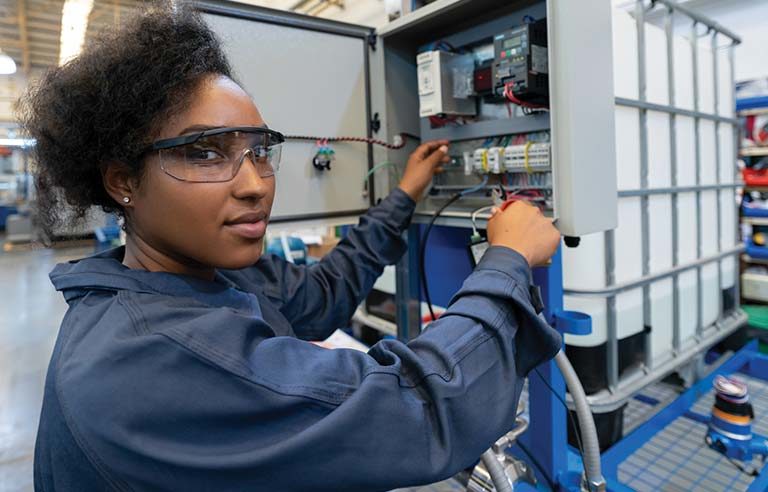Situational awareness
A ‘separate dimension of hazard control’

How to help
For internal stressors that employees may bring to their job, such as thinking about a sick parent or child, employers can help by establishing and maintaining open lines of communication.
“It really is culture, improving that supervisor-employee culture,” Corbett said. “And that’s to say, ‘Hey, how are you today?’ or ‘How are you feeling?’ And to actually be able to get that dialogue of, or folks feeling safe to say, ‘You know what, I’m not OK today. My son’s in the hospital,’ or ‘I’ve got this going on.’”
Some potential ways to approach this situation – from an employer’s perspective – are to offer to come back and check in with the employee, stay apprised of their circumstances away from work, and perhaps put them on a different job or task.
The key, Corbett added, is “to recognize that if someone’s going through something, it’s going to be tough to keep their mind on task.” Another step is having employee assistance resources available.
Along with communication, giving employees autonomy to make decisions when needed can help with situational awareness and getting them to “trust their instincts.”
“One of the biggest things about that is safety needs to be decentralized,” Worden said. “We want to decentralize decision-making so that when people are able to identify those situations, then they can make the best decision in real time, even if no one is around to give orders.”
What workers can do
One way employees can help themselves is to understand or recognize when and how they might lose focus or go on “autopilot.”
In the April episode of S+H’s podcast “On the Safe Side,” SafeStart Senior Safety Consultant Tim Page-Bottorff described one technique discussed in his presentation, “Four Life Lessons From a Traveling Zombie,” called critical error reduction.
“The best way to start is to predict at the very beginning of the day and ask yourself, ‘When am I most likely going to make a mistake, where will it be and what time will it be?’” Page-Bottorff said.
He explained that the predictions then allow workers to recognize the moment(s) when they need to raise their awareness. “It’ll help you get out of those zombielike moments.”
Corbett detailed another quick technique workers can use to pull themselves out of “autopilot” called “S.T.O.P.”:
Stop
Take a breath
Observe your surroundings
Proceed with awareness
“Taking a deep breath, believe it or not, it actually pulls your brain out of autopilot physiologically,” she said. “There’s something to utilizing that deep breath and utilizing your senses. It’s a different part of your brain that gets engaged and pulls you out of autopilot.”
Another problem, of course, is avoiding distractions such as using a cellphone while driving or walking around a warehouse while wearing headphones.
Worden said if a worker isn’t following rules to stay free of distraction, employers have “an obligation to make sure everything that we do is fair and just and that we’re providing safe conditions, safe practices, training and education.
“Then, if something happens, it’s an obligation to go back and reinforce the rules and making sure we communicate it, give them every opportunity to do it safely.”
If, after doing all these things, an employer finds the person actively chose not to follow the protocols, then it’s “very equitable” for the worker to be held accountable for their behavior, Worden said.
Employers should emphasize the importance of staying distraction-free, focused and aware.
“A lapse in awareness could be what causes a small or catastrophic mistake that can change someone’s life forever,” Corbett said.
Post a comment to this article
Safety+Health welcomes comments that promote respectful dialogue. Please stay on topic. Comments that contain personal attacks, profanity or abusive language – or those aggressively promoting products or services – will be removed. We reserve the right to determine which comments violate our comment policy. (Anonymous comments are welcome; merely skip the “name” field in the comment box. An email address is required but will not be included with your comment.)

